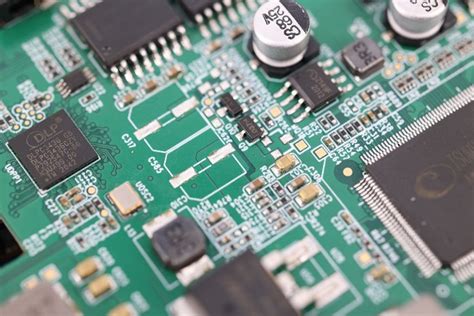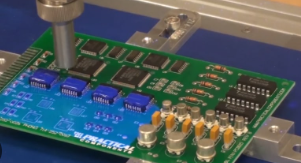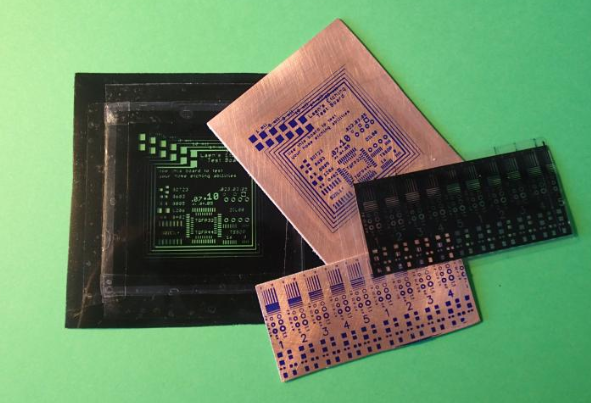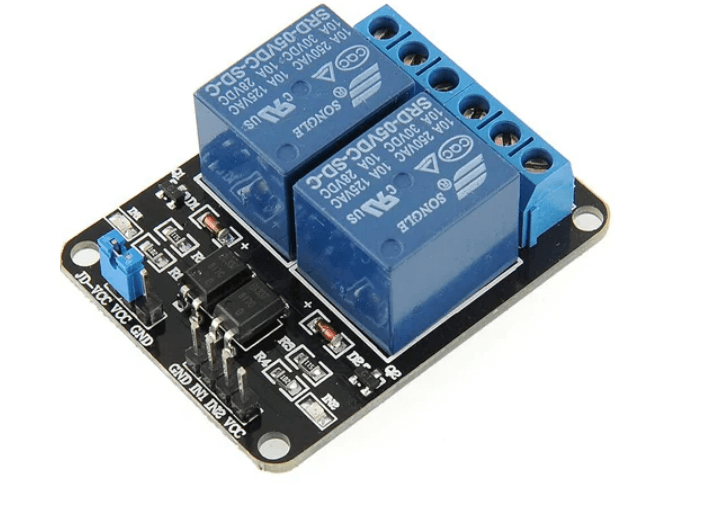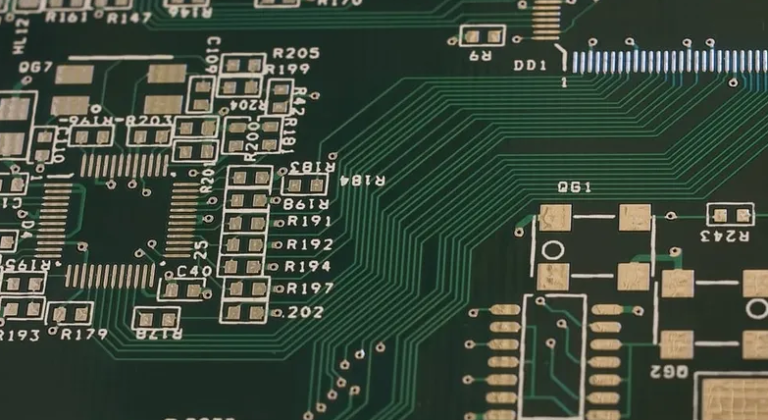Isola pcb materials
Advantages Of Using Isola PCB Materials In High-Frequency Applications
In the realm of high-frequency applications, the choice of printed circuit board (PCB) materials is crucial to ensure optimal performance and reliability. Among the various options available, Isola PCB materials have emerged as a preferred choice for many engineers and designers. The advantages of using Isola PCB materials in high-frequency applications are manifold, and understanding these benefits can significantly impact the efficiency and effectiveness of electronic devices.
To begin with, Isola PCB materials are renowned for their excellent electrical properties, which are essential for high-frequency applications.
These materials exhibit low dielectric constant (Dk) and low dissipation factor (Df), which are critical parameters in minimizing signal loss and ensuring signal integrity. The low Dk allows for faster signal transmission, while the low Df reduces energy loss as heat, thereby enhancing the overall performance of the circuit. Consequently, devices utilizing Isola materials can achieve higher speeds and better signal clarity, which are indispensable in applications such as telecommunications, radar systems, and high-speed data processing.
Moreover, Isola PCB materials offer superior thermal management capabilities.
High-frequency applications often generate significant amounts of heat, which can adversely affect the performance and longevity of electronic components. Isola materials are designed to withstand high temperatures and provide efficient heat dissipation, thereby maintaining the stability and reliability of the circuit. This thermal resilience is particularly beneficial in environments where temperature fluctuations are common, ensuring that the devices continue to operate effectively without the risk of overheating.
In addition to their electrical and thermal advantages, Isola PCB materials are also known for their mechanical robustness.
They possess excellent dimensional stability, which is crucial in maintaining the integrity of the circuit layout during the manufacturing process and throughout the device’s operational life. This stability ensures that the components remain securely in place, reducing the risk of mechanical failure and enhancing the durability of the device. Furthermore, Isola materials are resistant to moisture and chemical exposure, which can be detrimental to the performance of PCBs in harsh environments. This resistance extends the lifespan of the devices and reduces the need for frequent maintenance or replacement.
Another significant advantage of Isola PCB materials is their compatibility with advanced manufacturing processes.
As technology continues to evolve, the demand for miniaturized and more complex electronic devices is increasing. Isola materials are well-suited for high-density interconnect (HDI) designs, allowing for the creation of compact and intricate circuits without compromising performance. This compatibility with modern manufacturing techniques not only facilitates innovation but also enables cost-effective production, making Isola materials an economically viable option for high-frequency applications.
Furthermore, Isola is committed to sustainability and environmental responsibility, which is an increasingly important consideration in today’s world.
The company adheres to stringent environmental standards and regulations, ensuring that their materials are produced with minimal environmental impact. This commitment to sustainability not only benefits the planet but also aligns with the values of companies seeking to reduce their carbon footprint and promote eco-friendly practices.
In conclusion, the advantages of using Isola PCB materials in high-frequency applications are substantial. Their exceptional electrical properties, thermal management capabilities, mechanical robustness, compatibility with advanced manufacturing processes, and commitment to sustainability make them an ideal choice for engineers and designers. By opting for Isola materials, companies can enhance the performance, reliability, and longevity of their electronic devices, ultimately leading to greater success in the competitive landscape of high-frequency applications.

Comparing Isola PCB Materials: Which One Is Right For Your Project?
When embarking on a printed circuit board (PCB) project, selecting the appropriate materials is crucial to ensure optimal performance and reliability. Among the myriad of options available, Isola PCB materials stand out due to their high quality and versatility. However, with a diverse range of materials offered by Isola, it can be challenging to determine which one best suits your specific project requirements. To make an informed decision, it is essential to compare the various Isola materials based on their properties, applications, and performance characteristics.
To begin with, Isola’s FR-4 materials are among the most commonly used in the industry.
These materials are known for their excellent mechanical and electrical properties, making them suitable for a wide range of applications. FR-4 materials are composed of woven fiberglass cloth with an epoxy resin binder, which provides a good balance of performance and cost-effectiveness. They are ideal for general-purpose applications where moderate thermal and electrical performance is sufficient. However, for projects requiring higher thermal stability or enhanced electrical performance, other Isola materials may be more appropriate.
For applications demanding superior thermal management, Isola’s high-performance materials such as the IS410 and IS420 series offer significant advantages.
These materials are designed to withstand higher temperatures and provide better thermal conductivity compared to standard FR-4. The IS410, for instance, is a high Tg (glass transition temperature) material that offers improved thermal performance, making it suitable for high-reliability applications such as aerospace and automotive electronics. Similarly, the IS420 series provides enhanced thermal and electrical properties, making it an excellent choice for high-speed digital applications.
In addition to thermal considerations, electrical performance is another critical factor when selecting PCB materials.
For high-frequency applications, Isola’s RF/microwave materials, such as the I-Tera MT and Astra MT series, are specifically engineered to deliver low dielectric loss and stable electrical properties over a wide frequency range. These materials are ideal for RF and microwave circuits, where signal integrity and minimal signal loss are paramount. The I-Tera MT series, for example, offers a low dissipation factor and excellent dimensional stability, making it suitable for advanced communication systems and radar applications.
Furthermore, for projects that require a balance between performance and cost, Isola’s halogen-free materials provide an environmentally friendly alternative without compromising on quality.
The DE104i and TerraGreen series are examples of halogen-free materials that offer good thermal and electrical performance while adhering to environmental regulations. These materials are particularly suitable for consumer electronics and other applications where environmental considerations are a priority.
In conclusion, selecting the right Isola PCB material for your project involves a careful evaluation of the specific requirements and constraints of your application. By considering factors such as thermal management, electrical performance, and environmental impact, you can narrow down the options to find the most suitable material. Whether you need the cost-effectiveness of FR-4, the high thermal stability of IS410, the superior electrical properties of I-Tera MT, or the eco-friendliness of halogen-free options, Isola offers a comprehensive range of materials to meet diverse project needs. Ultimately, understanding the unique characteristics of each material will enable you to make an informed decision, ensuring the success and reliability of your PCB project.
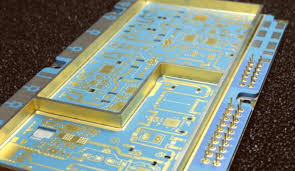
Environmental Impact Of Isola PCB Materials And Sustainable Alternatives
The environmental impact of Isola PCB materials has become a topic of increasing concern as the demand for electronic devices continues to rise globally. Printed Circuit Boards (PCBs) are integral components in virtually all electronic devices, and Isola is a leading manufacturer of high-performance PCB materials. However, the production and disposal of these materials pose significant environmental challenges. Understanding these impacts and exploring sustainable alternatives is crucial for reducing the ecological footprint of the electronics industry.
Isola PCB materials are primarily composed of fiberglass, epoxy resins, and copper.
The manufacturing process involves several stages, each with its own environmental implications. For instance, the extraction and processing of raw materials such as copper and fiberglass require substantial energy and water resources, contributing to greenhouse gas emissions and water pollution. Additionally, the use of epoxy resins, which are derived from petrochemicals, raises concerns about the depletion of non-renewable resources and the release of volatile organic compounds (VOCs) during production.
Moreover, the disposal of PCBs presents further environmental challenges.
Electronic waste, or e-waste, is one of the fastest-growing waste streams globally, and PCBs are a significant component of this waste. Improper disposal can lead to the release of hazardous substances, including heavy metals and toxic chemicals, into the environment, posing risks to both human health and ecosystems. The lack of effective recycling infrastructure exacerbates this issue, as many PCBs end up in landfills or are incinerated, leading to further environmental degradation.
In response to these challenges, the electronics industry is increasingly exploring sustainable alternatives to traditional PCB materials.
One promising approach is the development of bio-based materials, which aim to reduce reliance on non-renewable resources and minimize environmental impact. For example, researchers are investigating the use of natural fibers, such as hemp or flax, as substitutes for fiberglass. These materials are not only renewable but also biodegradable, offering a more sustainable option for PCB production.
Another avenue for reducing the environmental impact of PCBs is the implementation of closed-loop recycling systems.
By recovering and reusing materials from end-of-life PCBs, manufacturers can significantly reduce the demand for virgin resources and minimize waste. Advances in recycling technologies, such as chemical recycling and pyrolysis, are making it increasingly feasible to recover valuable materials like copper and precious metals from discarded PCBs, thereby promoting a circular economy within the electronics industry.
Furthermore, the adoption of green manufacturing practices can also contribute to reducing the environmental footprint of PCB production.
This includes optimizing energy and water use, minimizing waste generation, and reducing emissions of harmful substances. Companies like Isola are beginning to implement such practices, recognizing the importance of sustainability in maintaining their competitive edge and meeting the growing demand for environmentally responsible products.
In conclusion, while Isola PCB materials play a critical role in the electronics industry, their environmental impact cannot be overlooked. By exploring sustainable alternatives and adopting greener manufacturing practices, the industry can mitigate these impacts and move towards a more sustainable future. As consumer awareness and regulatory pressures continue to grow, the shift towards environmentally friendly PCB materials is not only a necessity but also an opportunity for innovation and leadership in the electronics sector.

Innovations In Isola PCB Materials For Enhanced Thermal Management
In the rapidly evolving field of electronics, the demand for efficient thermal management solutions has become increasingly critical. As devices become more compact and powerful, the need for materials that can effectively dissipate heat is paramount. Isola, a leading manufacturer of advanced circuit materials, has been at the forefront of developing innovative solutions to address these challenges. Their latest advancements in printed circuit board (PCB) materials are designed to enhance thermal management, thereby improving the performance and reliability of electronic devices.
One of the key innovations in Isola’s PCB materials is the development of high thermal conductivity laminates.
These materials are engineered to facilitate the efficient transfer of heat away from critical components, thereby reducing the risk of overheating and subsequent failure. By incorporating advanced resin systems and fillers, Isola has been able to achieve thermal conductivities that significantly surpass those of traditional materials. This improvement is particularly beneficial in high-power applications, where effective heat dissipation is crucial for maintaining optimal performance.
In addition to high thermal conductivity, Isola has also focused on improving the thermal stability of their PCB materials.
This is achieved through the use of advanced polymer chemistries that enhance the material’s ability to withstand high temperatures without degrading. As a result, these materials maintain their mechanical and electrical properties even under extreme conditions, ensuring the longevity and reliability of the electronic devices in which they are used. This is especially important in industries such as automotive and aerospace, where devices are often exposed to harsh environments.
Moreover, Isola’s innovations extend to the development of materials with low coefficients of thermal expansion (CTE).
A low CTE is essential for minimizing the mechanical stresses that occur due to temperature fluctuations, which can lead to warping or delamination of the PCB. By carefully selecting and engineering the composite materials used in their laminates, Isola has been able to produce PCBs that exhibit minimal expansion and contraction, thereby enhancing their dimensional stability. This advancement is particularly advantageous in applications where precision and reliability are paramount.
Furthermore, Isola has made strides in improving the manufacturability of their advanced PCB materials.
By optimizing the processing characteristics of their laminates, they have facilitated easier fabrication and assembly, which in turn reduces production costs and time. This is achieved through innovations in resin formulation and curing processes, which allow for more efficient handling and processing of the materials. Consequently, manufacturers can produce high-performance PCBs with greater ease and consistency, ultimately benefiting the end-users with more reliable and cost-effective electronic products.
In conclusion, Isola’s innovations in PCB materials represent a significant advancement in the field of thermal management for electronic devices. By developing materials with high thermal conductivity, enhanced thermal stability, low coefficients of thermal expansion, and improved manufacturability, Isola is addressing the critical challenges faced by the electronics industry. These advancements not only improve the performance and reliability of electronic devices but also contribute to the overall efficiency and sustainability of electronic manufacturing. As the demand for more powerful and compact devices continues to grow, Isola’s contributions to PCB material technology will undoubtedly play a crucial role in shaping the future of electronics.

